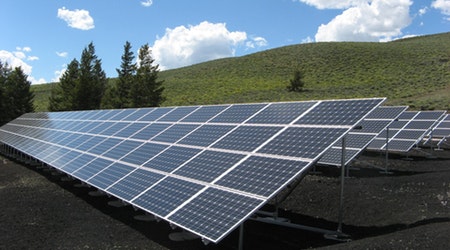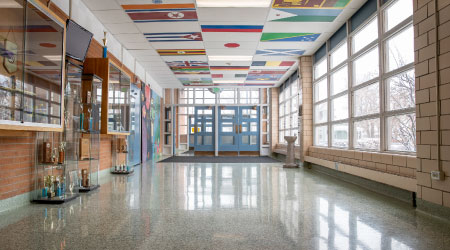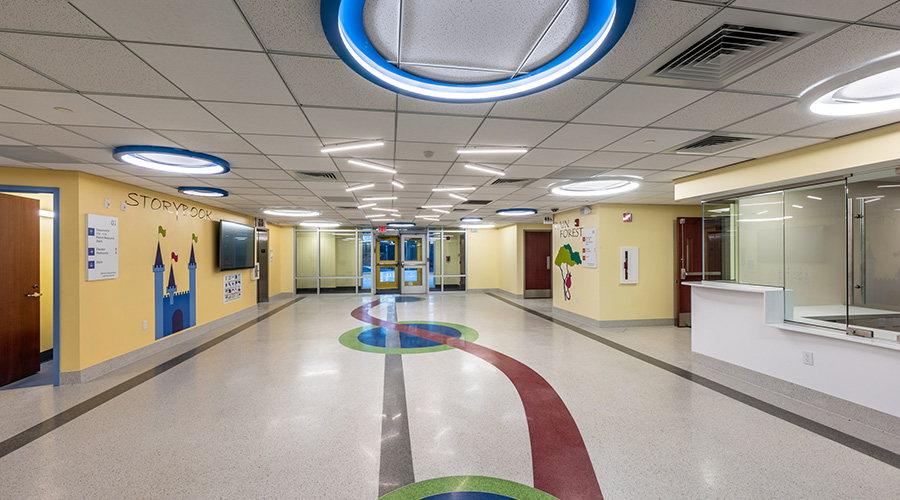Across the Industry
On Management
DOE resources target bottom-line energy benefits
Schools might be able to lower their energy bills by up to 25 percent when using new guidelines published in August by the U.S. Department of EnergyNational Renewable Energy Laboratory (NREL).
Published in six books with tailored strategies for varying climates, the guidelines provide information about site design, daylighting and windows, energy-efficient building shells, lighting and electrical systems, mechanical and ventilation systems, renewable energy systems, water conservation, recycling systems, waste management, transportation, and resource-efficient building products.
The guidelines also address health and safety issues and are designed to help school districts improve the learning environment for less money by incorporating energy-efficient designs and lowering their utility bills.
Copies of the design guidelines are available in book form or on CD by calling (800) DOE-3732.
But schools aren’t the only facilities targeted for savings by recent DOE publications. A new version of the NREL’s Energy 10 — software that monitors building energy use — can help managers compute and analyze the cost of operating a building during its lifetime. (DOE) and
The seven upgrades to Energy 10 include a discounted cash-flow evaluation of a building’s lifetime and a more powerful graphing application. The cash-flow evaluation program takes into account many factors, such as the initial cost of construction, mortgage payments, annual electric costs and annual tax benefits. Users can estimate costs with simple scaling laws or they can supply their own cost estimates.
Energy 10 also lets users determine how upgrades will affect operating costs. Window specifications, high-efficiency chiller designs, or increased use of daylighting can be used to determine the net effect on operating costs.
The software also simulates a year of hour-by-hour operations and displays annual, monthly or hourly energy performance graphs. To assist this complex modeling process – which requires one billion calculations — the software relies upon historical weather data for 239 locations around the U.S.
Energy 10 software is distributed by the Sustainable Buildings Industry Council (SBIC), which provides training workshops and user support. More information is available from SBIC at (202) 628-7400, extension 210.
Study finds hazards make many playgrounds unsafe
Managers whose areas of responsibility include playgrounds, take note: A majority of U.S. playgrounds have serious safety flaws, according to a recent survey. The survey, conducted by the Consumer Federation of America (CFA), examined playgrounds in 26 states and the District of Columbia. The group found that 79 percent of playgrounds did not have adequate protective surfacing; 58 percent had climbers or slides higher than 6 feet; and 49 percent of playgrounds with swings violated one or more recommended safety guidelines.
Eighty percent of injuries at playgrounds are caused by falls, says the (CFA), so proper playground surfacing materials are essential.
The CFA produced a Model Law on Public Play Equipment; the following safety checklist contains recommendations for facilities with playground equipment:
- Use protective surfacing under or around play equipment approved by the Consumer Product Safety Commission. Wood chips, shredded bark mulch, sand, pea gravel and shredded tires are acceptable when installed and maintained to depths of at least 9 inches and not wet or compacted.
- Ensure that play equipment is spread far enough apart to prevent accidental contact in case of a fall.
- Make sure the highest rung or platform on climbing equipment or slides is not more than 4 feet above protective surfacing for preschool-age children or more than 6 feet above protective surfacing for school-age children.
- Equip elevated play surfaces, including bridges, walkways and ramps, with guard rails or protective barriers.
- Make sure swings are made of flexible materials and spaced far enough apart to prevent contact while in use.
- Ensure that no more than two swing seats are suspended from the same section of the structure.
Visit Consumer Federation of America for more information.
IAQ targets:
HVAC ducts and low-emission building materials
As indoor air quality (IAQ) becomes a higher priority in institutional and commercial facilities, government agencies and environmental groups alike are developing new ways to improve IAQ. Two recent actions demonstrate how wide-ranging and complex the issue is.
The U.S. Environmental Protection Agency (EPA) recently issued a warning against using disinfectants in HVAC/R systems. Although directions for most of these products permit use on hard, nonporous surfaces, such directions may not include use in HVAC/R systems. Saying that disinfectants and antimicrobial agents not approved for use in HVAC/R systems could pose health threats to building occupants, the EPA also warned against using approved chemical products in ducts.
“Even in circumstances where labels do list HVAC/R systems as a possible use, we are concerned that the agency has not received a reviewed adequate data to fully evaluate risks to building occupants of product efficacy,” says Marcia Mulkey, director of the EPA’s office of pesticide programs.
For more information about HVAC/R disinfectants, contact (703) 308-6415.
Contaminant-releasing building materials and furnishings can also cause poor IAQ. To improve IAQ, the U.S. Green Building council has added building material emission requirements to achieve Leadership in Energy and Environmental Design for Commercial Interiors (LEED-CI) certification.
LEED-CI addresses specific concerns for tenant spaces in office and institutional buildings. To obtain LEED-CI certification credits for low-emitting materials, building materials, furniture and furnishings must be Greenguard certified or meet the organization’s emission levels.
Greenguard establishes standards for indoor products and testing protocols. Because many interior products and materials release odorous or potentially irritating contaminants into the indoor environment, all products certified by Greenguard must pass a series of emission tests and undergo quarterly monitoring tests to ensure their low-emitting status.
Greenguard’s product guide.
Snapshot
Monitoring computers:
Offices and schools in the lead
The proliferation of computing technology throughout institutional and commercial facilities has had a tremendous impact on maintenance and engineering. The effects have included wiring and cabling requirements, as well as power quality issues.
The graph below shows computers’ impact in key building markets, as documented in the
recently released 1999 Commercial Buildings Energy Consumption Survey, conducted by the U.S. Department of Energy.

Regulatory Alert
ASHRAE Action: Training, research and an addendum
Managers looking for help in applying ANSI/ASHRAE Standard 62-2001, Ventilation for Acceptable Indoor Air Quality, now have additional guidance. ASHRAE recently approved addendum 62k, an appendix addressing application of the standard in new and existing buildings. The standard and addendum sets minimum ventilation rates and other requirements for commercial and institutional buildings. Even though the standard was written for new buildings or renovations, ASHRAE says that many of the requirements can also be useful in evaluating existing buildings.
Free published addenda.
Also, a recent ASHRAE survey found that users need more training to adequately apply the organization’s energy standard, 90.1. An ASHRAE committee recently surveyed 1,200 purchasers of Standard 90.1, Energy Standard for Buildings, Except Low-Rise Residential Buildings, which sets minimum requirements for the design of energy-efficient buildings.
Survey respondents say they need more information and training to adequately implement the standard. ASHRAE has already sponsored satellite broadcasts on 90.1, presenting information on the envelope, lighting and mechanical sections, but plans to address training requests with additional workshops, Internet-based tutorials, an expanded user’s manual, and software that contains a database of construction components and formulas.
Through the ASHRAE Learning Institute, the organization also provides a professional development seminar, which presents an overview of the revised standard, plus the requirements and methods of compliance. Visit ASHRAE's website for more information.
New Guideline Refines Commissioning Methods
Disparate building commissioning methods can be frustrating for managers who want to return their buildings to original operating efficiencies. The Associated Air Balance Council’s (AABC) Commissioning Guideline eases commissioning headaches by standardizing HVAC commissioning methods.
The guideline identifies approved methods of building commissioning, discusses the roles and responsibilities of commissioning team members, describes techniques when testing and balancing HVAC systems, identifies the range of services classified as commissioning, and elaborates on the benefits achieved through commissioning. The guideline also includes sample specification and request for proposal forms.
Because HVAC systems constitute a large part of the overall commissioning process, the AABC also offers a commissioning certification program. For more information about the Commissioning Guideline or certification, call (202) 737-0202 or visit AABC online.
Related Topics:













